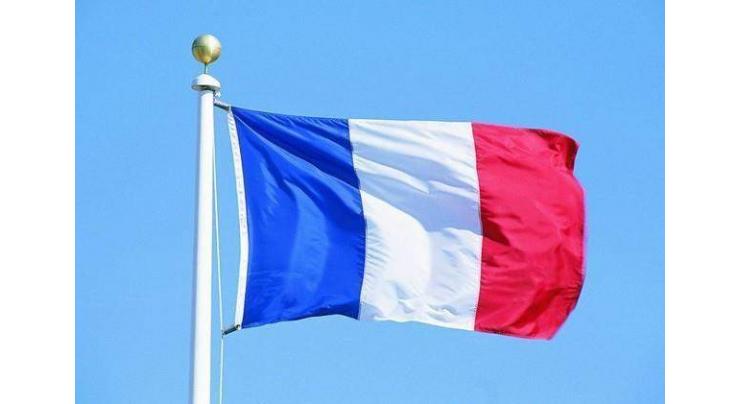
France's Overseas Territories Explained
Faizan Hashmi Published December 08, 2021 | 04:44 PM

The sun never sets on France as it possesses a string of overseas territories scattered around the globe, from former slave colonies in the Caribbean and Indian Ocean to tropical islands in the remote South Pacific
Paris, Dec 8 (APP - UrduPoint / Pakistan Point News - 8th Dec, 2021 ) :The sun never sets on France as it possesses a string of overseas territories scattered around the globe, from former slave colonies in the Caribbean and Indian Ocean to tropical islands in the remote South Pacific.
Known colloquially as the Dom-Tom, the 13 territories mostly inherited from the colonial area are home to 2.7 million people, around four percent of France's population.
While their constitutional status differs, all residents have French nationality and can vote for the president and their own MPs in parliament in Paris.
- Fully part of France - Five of the former colonies are officially overseas regions or departments -- fully part of France and subject to French laws.
- Guadeloupe and Martinique in the eastern Caribbean are home to about 400,000 people each.
Once part of France's lucrative sugar colonies, which were based on African slave labour, the Antilles islands are now one of France's favourite tourist destinations.
- French Guiana: On the northeastern coast of South America, sparsely populated Guiana is mostly tropical rainforest and has a population of around 260,000.
In the 19th century it served as a penal colony, including the notorious Devil's Island prison. Close to the equator, it is also home to the European Space Agency's satellite launch site at Kourou.
- Reunion: A tropical Indian Ocean island off Madagascar, Reunion is home to just over 850,000 people, many descendants of slaves and indentured labourers from Africa and Asia.
Its economy is based mainly on agriculture and tourism.
- Mayotte: Unlike the other Comoros islands in the Indian Ocean, Mayotte (population 256,500) chose to remain French in an independence referendum in 1974.
But thousands of impoverished illegal migrants pour in every year from the other Comoros islands.
- More autonomy - Other French territories, called overseas collectivities, are more autonomous and can pass their own laws, although some areas like defence are run from Paris.
- French Polynesia: Made up of 118 islands scattered over a vast area of the central Pacific Ocean, French Polynesia is best known for its main territory of Tahiti, a tourist idyll with black sand beaches. It has a population of 273,000.
- Wallis and Futuna: This isolated Polynesian archipelago with a population of 12,000 is heavily reliant on subsidies from Paris.
- Saint Pierre and Miquelon: The two islands about 20 kilometres (12 miles) off Canada's Atlantic coast are the only remnants of France's former colonial empire in North America. Their population is just 6,000.
- Saint Martin and Saint Barthelemy: The two small French Caribbean Antilles islands have 38,600 and 10,000 inhabitants respectively.
- New Caledonia - The Polynesia archipelago has its own status under a 1998 accord with France which allows for gradually increasing autonomy.
It will vote on Sunday on whether to become fully independent.
Home to 269,000 people, New Caledonia served as a penal colony in the 19th century. Today its economy is based mainly on agriculture and its vast nickel resources.
- Uninhabited and remote -The islands that make up the French Southern and Antarctic Lands are visited only by researchers working in scientific stations.
Uninhabited Clipperton Island, a coral atoll 1,000 kilometres off Mexico in the Pacific, is the centre of a huge Exclusive Economic Zone administered by France's overseas territories ministry.
Related Topics
Recent Stories

Mired in crisis, Boeing reports another loss

Session Awarding Ceremony 2024 held at Cadet College Muzaffarabad

Austrian ski great Hirscher to make comeback under Dutch flag

Pakistan, Japan agrees to convene 'Economic Policy Dialogue'

FM Dar conveys deepest sympathy on torrential rains devastation in UAE

Spain PM Sanchez says weighing resignation after wife's graft probe

Tennis: ATP/WTA Madrid Open results - 1st update

Long-lost Klimt portrait auctioned off for 30 mn euros

Osaka seals first win on clay since 2022 in Madrid

Earthquake jolts Karachi

Sindh minister orders operation after attack on police in Ghotki

TikTok to fight US ban law in courts
More Stories From World
-
Football: English Championship table
1 hour ago -
Time for 'democratic transition' in Venezuela: opposition candidate to AFP
2 hours ago -
Spain's Pedro Sanchez : a risk-taker with a flair for survival
2 hours ago -
Football: French Ligue 1 table
2 hours ago -
Nadal will only play French Open if he can 'compete well'
2 hours ago -
Ukraine, Israel, TikTok: the massive aid package before US Congress
2 hours ago
-
TikTok to fight US ban law in courts
2 hours ago -
Football: French Ligue 1 results
3 hours ago -

Spain PM Sanchez says weighing resignation after wife's graft probe
4 hours ago -

Long-lost Klimt portrait auctioned off for 30 mn euros
4 hours ago -

TikTok to fight US ban law in courts
4 hours ago -

Anger among Ukrainians in Poland as Kyiv halts passport renewals
4 hours ago



